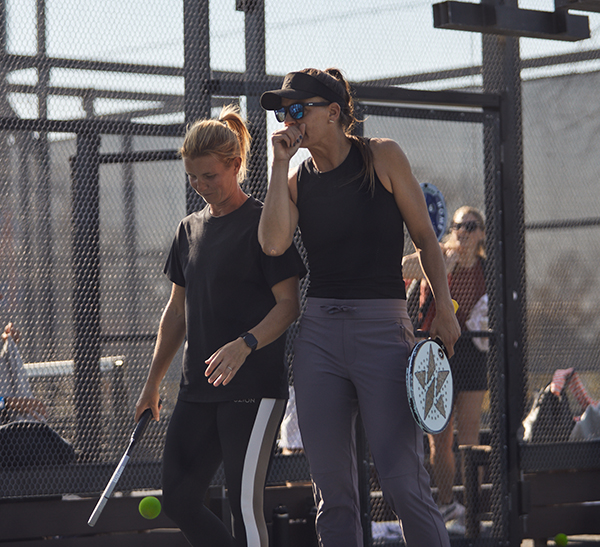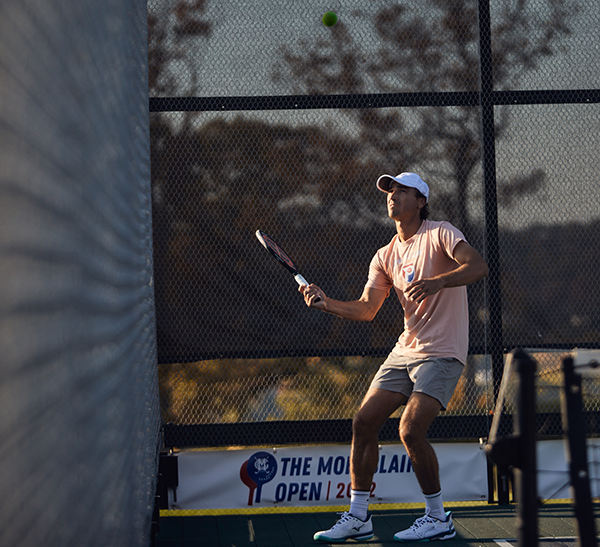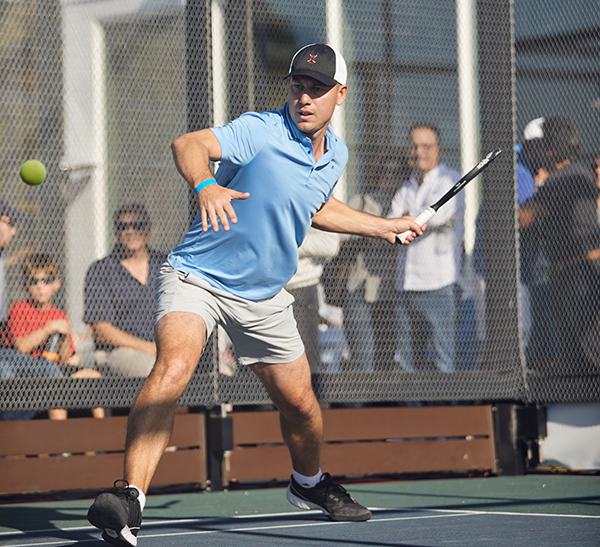Thinking Like a Pro - Set the Table
November 9, 2022
Coaches Corner

By Oliver Jones
He teaches paddle and tennis at The Overbrook Golf Club in Villanova, PA.
Oliver holds a 7.2 PTI and competes nationally on the APTA tournament circuit with partner Jody Sambrick.
In this series Thinking Like a Pro, we are contrasting the mental approach of the professional paddle player to that of the amateur or recreational club player. (If you want to dip your toes into what the pros are doing and make the move from standard to great, these articles can help to get you there.) By highlighting the differences, we will begin to get a clear view of a pro’s thought process. A mindset that allows him to advance his physical and mental limits and edge closer to his full potential.
While we will be thinking within a platform tennis context, these concepts emphasize underlying mental models for learning, and thus undoubtedly apply in all areas of life in which we seek true mastery. Each article in the series will examine one specific area; in this fourth article, we are setting the table in your favor.
SET THE TABLE
Paddle is a game with many ways to be successful. You can be a defensive-minded player, with great consistency and mental discipline; but you can also be a more aggressive player with a commanding offensive presence that can take control of a match.
No matter where you lie on the spectrum of players, one thing is for sure; you want to play games and execute strategies that you are uniquely well-suited to win, that give you the advantage, by using an organized and considered strategy that matches up well with your opponents.
It is exactly for this reason that the highest level players set the playing conditions (table) for how the match is going to be played (on their terms) instead of playing the table they have been given.

Professionals aren't willing to simply just play, reacting in the moment without an organized plan for what their optimal strategy should be.
Professionals think deeply about what patterns or play styles are going to make for better risk/reward scenarios. They know that should they fail to do so, they will become vulnerable to playing points that, in fact, do not suit their skill set, and fall victim to opponents who can lure them into playing sub-optimal strategies.
The importance of setting the table is highlighted clearly in a game like paddle. Due to the physical dimensions and geometry of the court, it is extremely challenging to hit winners via big shots (like a serve or forehand). These shots are neutralized by the height of the net relative to the length of the court, coupled with the fact that there are screens from which we can let the ball rebound.
So, the way we must win is to methodically and invariably induce our opponents to play on our terms. We want them to take on more risk over the long term, giving us the edge over the course of the match.
SILVERWARE AND CRYSTAL
Let’s look at a couple of examples to highlight setting the table.
Your opponents like to play quickly, with big drives and massive overheads
Slow them down with higher and deeper lobs (if on the baseline) and softer, deeper overheads (if at the net). This will force them to have to play slowly with you OR take on more risk by continuing to be aggressive in more difficult spots.

Your opponents like to play slowly, rarely drive, and hit only the safest/slowest overheads
Get them out of their comfort zone with hard overheads off the screen that force them into the court, tempting them to consider the drive.
From the baseline, look to lob and blitz more, forcing them to get out of their pattern and thinking that they must play faster—they will have to hit their overheads harder to avoid the blitzer. This will open up opportunities for driving and more transitioning (net to baseline and vice versa) during the point and will serve to speed up the game to your benefit.
These are just some a few examples of how we can set the table more to our advantage, instead of simply letting our opponents dictate the style of play.
DON’T FORGET THE AMBIENCE
Do not simply exist in the environment, but instead, create the environment. Execute the idea of setting the table by using a considered framework for playing, based on the strengths and weaknesses of your opponents and how they match up to yours.

As the master of your environment, you will set the table for the match, set the conditions for the encounter, and be in command of the outcome, win or lose. Do this consistently and you will be the beneficiary of these thousands of small, precise, and deliberate actions taken to play the game on your terms.
Photo Credits: Garrison Block @garrisonblock






